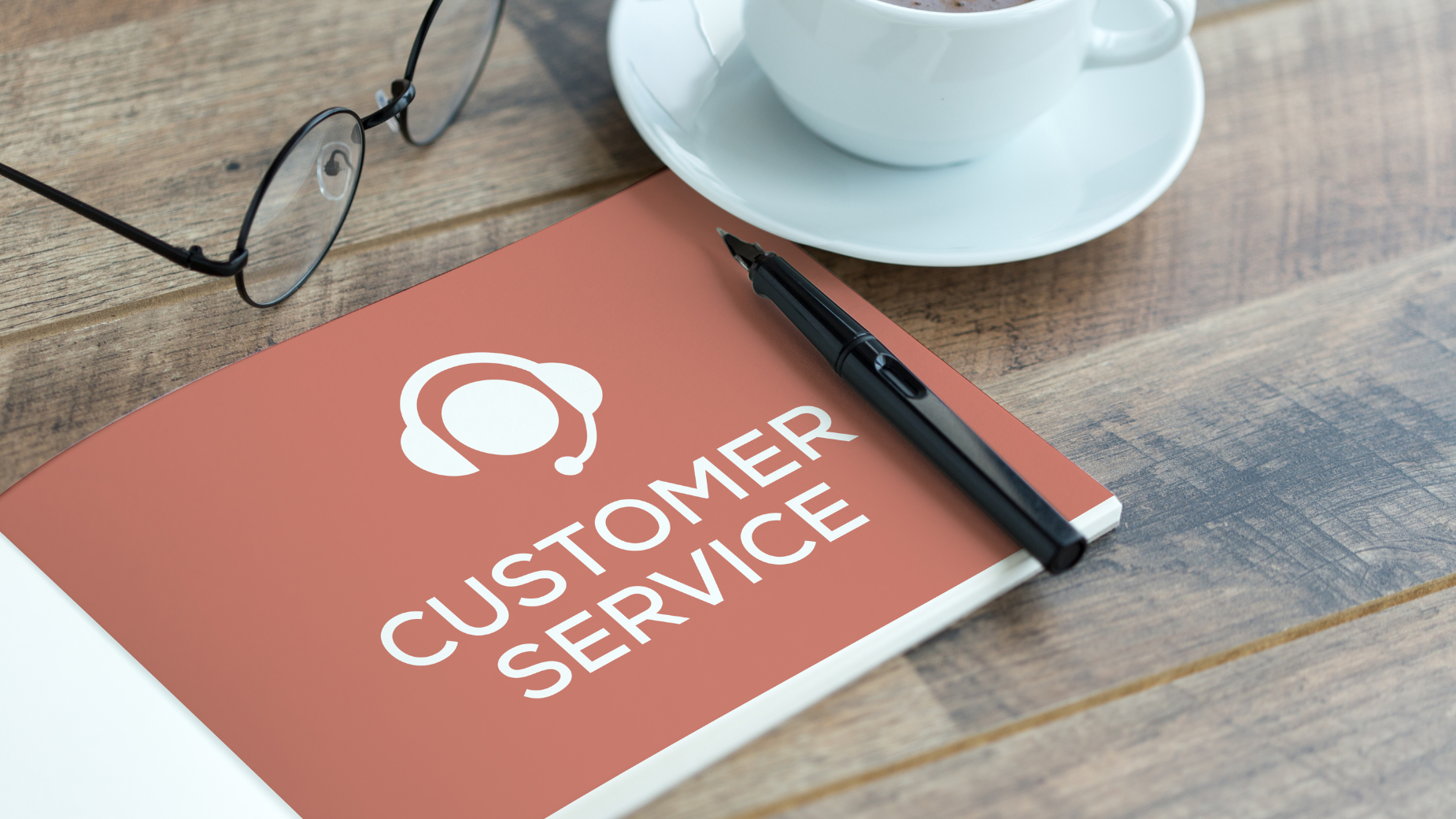Customer Success vs Customer Service: Key Insights

Understanding the difference between customer success vs customer service is key in today’s competitive business world. Both are critical for customer retention and, when done well, leave customers feeling valued.
Picture this: you’ve got a laptop issue and call tech support – that’s customer service, solving problems as they arise. Now imagine getting a call from the company showing you cool laptop features – that’s customer success in action, driven by your industry expertise and a company-wide initiative to prioritize customer satisfaction.
Are you ready to discover how your organization can benefit from implementing both strategies?
The secret to making this work is teamwork. All departments, from product creation to marketing, need to work together to strengthen customer relationships and ensure each customer interaction is positive.
Digital marketing also plays a role here. Creating engaging content, making personalized offers, and using SEO practices can attract more customers and keep them satisfied.
Both customer success and customer service are game-changers in today’s business world. They’re not just nice-to-haves; they’re must-haves. So, why wait? It’s time to get the ball rolling!
Table Of Contents:
- Customer Support Functions
- Key Differences Between Support and Success Teams
- The Importance of Collaboration Across Departments
- Digital Marketing Strategies & Their Role in Service/Success
- Utilizing Technology to Enhance Customer Success and Service
- FAQs in Relation to Customer Success vs. Customer Service
Customer Support Functions
Customer service personnel are vital in resolving product-related issues and teaching customers how to use the item.
Their primary focus is on providing timely, empathetic help, emphasizing keeping the customer’s needs at the forefront of every interaction. Skilled professionals empower customers to find answers via self-service resources while reporting challenges customers face to their respective product teams.
Resolving Product-Related Issues
Customer support is responsible for resolving product-related issues, answering questions about functionality, and educating users on the necessary steps to take for resolution. This can include troubleshooting technical difficulties, answering questions about functionality, and guiding users through necessary steps for resolution.
Educating Users About Products or Services
Customer support isn’t just about fixing problems. It’s also about teaching customers how to use products or services. Armed with their expert knowledge, these pros offer resources like tutorials and FAQs. Their goal? To ensure customers understand and confidently use what you’re offering. So, remember, there’s a whole team of experts ready to help you navigate your product or service journey. Now, that’s reassuring, right?
Empowering Self-Service Solutions
In today’s fast-paced digital world, many folks like finding solutions themselves instead of ringing up support. That’s why businesses need to offer easy-to-use self-service options, like chatbots or online forums. This way, users can get info quickly without waiting for help from a rep.
Leveraging Technology for Improved Customer Support Experience
Want to boost your customer service efficiency? Check out Custify. It’s a platform that keeps tabs on your customer journeys, so you can step in with help just when it’s needed. This way, everyone’s on the same page, and you can track how close you’re getting to that sweet spot of true customer satisfaction. Cool, right?
Customer Success Functions
Customer success teams play a crucial role in ensuring clients achieve their desired outcomes with your products or services. They ensure clients get what they want from your products or services. They’re like the early birds catching the worms, using data to offer personal support all through the customer journey. Now, let’s take a closer look at what they do:
• Proactive Approach for Achieving Better Results
Customer success teams are all about proactive engagement, constantly monitoring user behavior and patterns. This way, they can identify and address potential challenges before they turn into major issues, enhancing customer satisfaction and boosting customer retention rates.
• Data-Driven Insights for Personalized Support
The magic of customer success lies in leveraging data science. They use these insights to deliver tailored assistance, meeting each customer’s unique needs. By understanding user interaction with your products or services, they provide targeted suggestions to maximize the value customers get from their investments. This is the key to unlocking a superb customer experience.
Educational Outreach and Dedicated Assistance
A well-rounded customer success strategy includes both educational resources and one-on-one support.
Your team could whip up engaging content like webinars, blog posts, or tutorials. This way, customers can learn at their own pace. Add in some dedicated account managers for regular check-ins, and voila! You’re addressing specific customer concerns head-on.
Leveraging Technology for Enhanced Customer Success Efforts
In today’s digital age, tools like Custify come in handy. They track customer journeys, letting businesses step in just when help is needed. This keeps everyone on the same page, helping you track your progress toward that golden goal of true customer satisfaction. How’s that for smart working?
Key Differences Between Support and Success Teams
Understanding the difference between customer service and customer success can be a game-changer for your business growth strategy. Let’s dive into what sets these two apart, including their goals, measurements, skills, and impact on your business.
• Reactive vs. Proactive Approaches
Customer support teams are like your trusty defense, sorting out issues when customers raise the flag. But customer success teams? They’re like your forward players, predicting challenges and swooping in with solutions before trouble brews.
• Issue Resolution vs. Continuous Improvement Objectives
Customer support’s main goal is to fix problems fast, keeping satisfaction high. But customer success? They’re in it for the long haul, constantly upping the game to keep customers happy, loyal, and sticking around.
• Measuring Quality Provided vs. Tracking Business Impact Factors
Different metrics are used to measure the effectiveness of both departments. Customer support typically uses response time rates or resolution times as key performance indicators (KPIs). In contrast, Custify suggests that customer success teams track KPIs like churn rate, upsell opportunities, and customer lifetime value to gauge their impact on the business.
• Skillsets Required in Each Field
Support folks need to be great at verbal and analytical skills and know their product or service inside out. Success teams, on the other hand, need a bit extra. They’re crunching data, building relationships, and strategizing to help customers hit their goals.
Overall Business Impact
Both customer support and success teams are all about creating positive brand experiences. While support quickly solves issues, success builds long-term relationships leading to more customer retention and upsells. Knowing the difference can help businesses allocate resources to hit that sweet spot of true “customer satisfaction.”
Customer service and customer success teams might play on the same field, but they’ve got different game plans. Customer service reacts to problems, while customer success is one step ahead, nipping potential issues in the bud. At the end of the day, they both want to score big for your business, either by solving problems fast or building relationships that keep customers coming back for more.
The Importance of Collaboration Across Departments
Want your business to thrive in today’s competitive landscape? Here’s the secret sauce: collaboration across every department. Trust us, it’s a game-changer.
True customer success requires fully integrated collaboration across all departments that consider client needs holistically.
Pulling Together from Marketing to Sales:
- An effective strategy involves aligning the goals of various teams, such as marketing, sales, product development, and support, to ensure a seamless experience for customers at every touchpoint.
- This can be achieved by regularly sharing data insights and feedback between teams so everyone understands how their work impacts the overall customer journey.
Talking the Talk with Unified Communication:
- Maintaining open lines of communication within your organization ensures that all team members are on the same page when it comes to addressing clients’ concerns or celebrating successes together.
- A well-coordinated approach helps create a consistent voice across different platforms while also making sure no important information slips through the cracks during handoffs between teams.
- You may find tools like Slack, Trello, or Asana useful in facilitating smooth interdepartmental collaboration and keeping everyone informed about ongoing projects and updates related to customer success.
With everyone working together, you can deliver a top-notch customer experience. That’s how you keep customers coming back and spreading the word about your brand. It’s not just about great support; it’s about helping customers hit their goals with a rock-solid team behind them.
Digital Marketing Strategies & Their Role in Service/Success
Who doesn’t love a bit of digital marketing magic? It’s your secret weapon to attract new customers and keep your loyal ones hooked. By creating engaging content for users, businesses can attract potential customers and keep existing ones coming back for more.
Content marketing effectively provides valuable information that addresses your audience’s needs, pain points, or interests while subtly promoting your products or services.
Leveraging product knowledge for improved user experience is another key aspect of digital marketing strategies. Get your customer support teams, the folks who know your products inside and out, to help create top-notch content like blog posts, videos, webinars, and tutorials. This way, you’re delivering the goods and improving the user experience at the same time.
Digital marketing isn’t just about looking good. It’s about positioning your brand as an industry authority, building trust with your customers, and providing helpful resources throughout their journey with you.
- Create engaging content: Craft high-quality articles, infographics, videos, or podcasts that resonate with your target audience’s interests and preferences.
- Promote on social media: Share useful tips on platforms like Facebook, Twitter, or LinkedIn, where potential customers are likely browsing.
- Email campaigns: Send out regular newsletters featuring the latest updates from the company along with any relevant promotions/offers available exclusively through email subscribers list(s).
- Influencer partnerships: Collaborate with influencers within niche markets who share similar values/goals so they may endorse/promote business offerings via their own channels.
The result? A smooth customer experience from the first touch to a loyal customer. Increased customer satisfaction, longevity, and a win for both you and your influencers. Now that’s teamwork!
Using savvy marketing strategies is vital to boost both customer service and success. The trick? Seamlessly weave these strategies into your customer’s journey. From their first ‘hello’ with your brand right through to them becoming loyal customers – it’s all about smooth sailing. The result? A big thumbs-up in satisfaction and a long-term win-win situation for everyone involved.
Utilizing Technology to Enhance Customer Success and Service
In the modern biz world, tech tools like Custify are game-changers for customer success and service. This tool keeps tabs on your customer’s journey, letting your business swoop in proactively before minor hiccups turn into major headaches – a surefire way to keep your customers smiling.
Follow the User Journey
Keep an eye on the data to make the most out of Custify or similar tools. Analyzing how each customer interacts with your product or service can help you spot patterns and trends, which can be your secret weapon for delivering personalized support.
- Analyze user behavior: Understand how clients interact with your product/service by monitoring their actions within the platform.
- Create targeted outreach campaigns: Use insights gained from tracking customer journeys to develop customized communication strategies designed around specific needs or pain points.
- Evaluate results continuously: Regularly review performance metrics related to customer engagement and adjust strategies accordingly for optimal effectiveness.
Keep it Fresh with Proactive Outreach
Open communication channels between all customer-facing teams – sales, marketing, and support – are a must. A steady flow of info ensures a smooth ride for your users, building trust and loyalty along the way.
Key Strategies:
- Cross-Functional Teams: Foster collaboration between departments by forming dedicated groups to tackle customer challenges.
- Regular Check-Ins: Hold routine meetings for teams to share updates, discuss obstacles, and brainstorm solutions.
In a nutshell, tech tools like Custify are vital in enhancing customer success and service. Tracking user journeys and proactive outreach backed by data insights result in personalized support, leading to happier customers, which means growth and long-term brand loyalty for your business.
Leverage tech tools like Custify to up your customer success and service game. You’ll boost customer satisfaction and loyalty by tracking user behavior, leveraging data insights for proactive customer touchpoints, teaming up across departments, and keeping communication lines wide open. It’s all about building trust and keeping your customers in the loop!
FAQs in Relation to Customer Success vs. Customer Service
1. Customer Service vs. Customer Success: What’s the Difference?
Customer service reacts, resolving product issues. In contrast, customer success acts proactively, aiding customers to reach their goals with your products or services.
2. Customer Service vs. Customer Experience: Which is Better?
Both boost business growth. Customer service handles issues, while customer experience involves all brand interactions — from marketing to sales and support. Seamless integration of these interactions leads to higher satisfaction.
Source: SuperOffice
3. How Effective Customer Service Leads to Success
Prompt issue resolution in customer service builds trust and loyalty. This lays the groundwork for long-term relationships that drive business success, thanks to repeat purchases, referrals, and an increased customer lifetime value.
Wrapping Up
Comparing Customer Success vs. Customer Service
Customer support handles issues as they come, while customer success plays the long game, proactively driving superior results with tailored support and insightful education.
Unified departmental collaboration, savvy digital marketing, and tech tool usage can turbocharge both areas.
Key to success? Measure the quality delivered by support teams and monitor business impact indicators driven by success squads.
Investing in these two vital areas can spur customer satisfaction and loyalty, paving the way for robust business growth.






